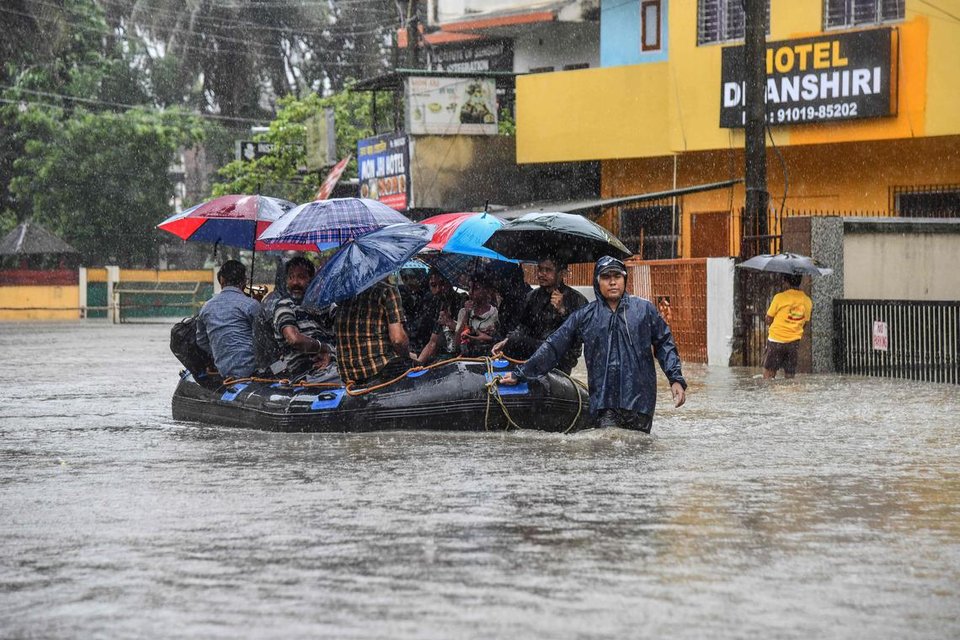
Torrential monsoon rains have claimed at least five lives in Assam over the past 24 hours, as floods and landslides wreak havoc across India’s northeastern region. According to officials from the Assam State Disaster Management Authority (ASDMA), the deluge was caused by incessant rainfall over the last three days, swelling rivers and breaching embankments.
The annual monsoon season, which stretches from June to September, is critical for India’s water supply and agriculture. However, it also brings widespread destruction, particularly in vulnerable regions such as the northeast. The five deaths reported are among the first of the 2025 season, with authorities fearing the toll could rise in the coming weeks.
Heavy rains caused rivers, including the powerful Brahmaputra and its tributaries, to overflow, flooding both rural and urban areas. Guwahati, the capital of Assam, has been severely impacted. Low-lying neighborhoods were submerged, forcing hundreds of families to evacuate their homes. City officials disconnected electricity in multiple districts as a precautionary measure to prevent electrocution.
The state government has issued a red alert for 12 districts. Chief Minister Himanta Biswa Sarma confirmed that rescue teams have been deployed and relief supplies, including rice, are being distributed to affected communities. “We have been reviewing the impending situation for the last three days,” Sarma said, assuring that emergency response measures are underway.
Climate experts have warned that while the monsoon is a natural and vital phenomenon, its intensity has been increasing due to climate change. The current floods add to a growing pattern of extreme weather events in the region.
Meanwhile, in a separate weather event, India’s financial hub Mumbai experienced its earliest monsoon arrival in nearly 25 years, as the city was battered by heavy rainfall earlier this week.
As the monsoon continues its advance across the subcontinent, authorities are bracing for further challenges, reinforcing emergency protocols, and urging residents in flood-prone areas to remain vigilant.
Sources By Agencies




